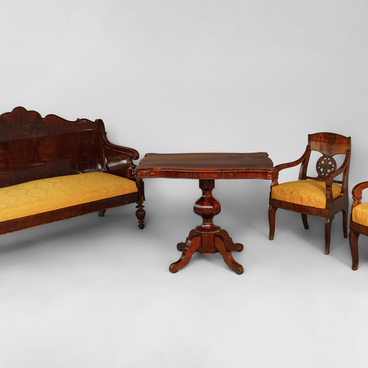One of the oldest forms of art is needlework. In the past, it was an integral part of any woman’s life and was considered one of the traditional female occupations and virtues. Every peasant household had a spinning wheel and a loom. There was a special area where women practiced their handicrafts, which occupied a prominent place in the house. While peasant women mostly worked at home, noblewomen could bring their needlework to parties. Until the 18th century, women stored their needlework accessories in various baskets, bags, and boxes.
In the 18th and 19th centuries, needlework became very popular. As a result, elegant and functional needlework stands appeared. They were designed according to the fashion of the time — in the styles of Rococo, Classicism, and Empire — and varied in size, style, and shape. These were the most elegant interior items in a noble house. Stands were made in different designs. They could have one or several pull-out drawers, a pull-out basket for supplies, a removable tabletop, and other features. They were crafted from various types of wood and adorned with carvings, paintings, and mosaics. Such a stand could serve as a decorative centerpiece of a craftswoman’s room. They could be found not only in noble houses in the Russian capital but also in small provincial towns.
The Lipetsk Regional Museum of Local Lore houses a bamboo needlework stand with X-shaped legs that cross each other. When the stand is unfolded, the suspended cloth bag is opened. It is used for storing unfinished work such as embroidery or knitted items. At the top, there is a rectangular majolica tabletop with an image of a flower. The tabletop has a bamboo frame. The ends of the bamboo sticks feature cylindrical metal tips. This table is very convenient, compact, and lightweight. It can be easily moved not only from one place to another but also to different rooms, which is an undeniable advantage.





